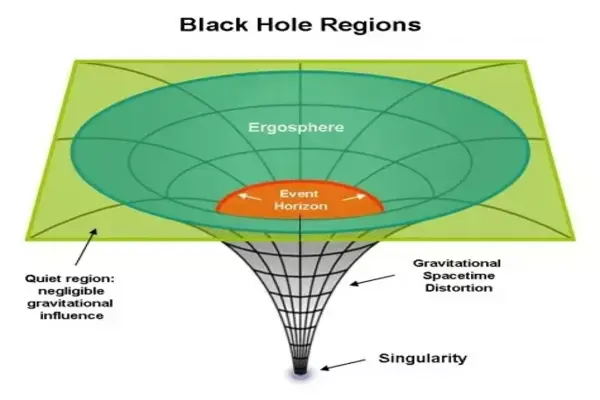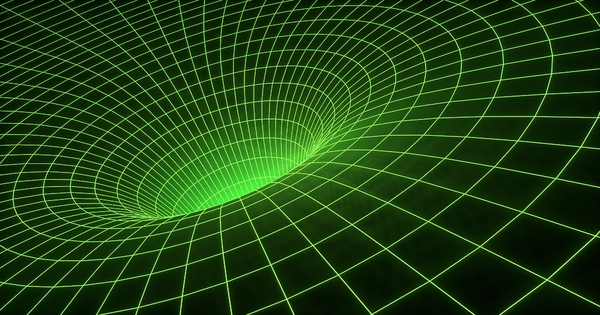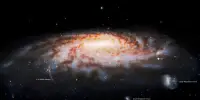A mathematical breakthrough could aid scientists in unifying Albert Einstein’s theory of gravity and the realm of quantum physics into a single universal idea. According to a team from Chalmers University of Technology and MIT, the discovery could someday assist explain the mysteries of our universe, such as black holes and dark matter.
How can Einstein’s gravity theory be reconciled with quantum mechanics? It’s a task that could lead to new insights into phenomena like black holes and the genesis of the universe. A recent publication in Nature Communications by researchers from Chalmers University of Technology in Sweden and MIT in the United States provides findings that shed new insight on major obstacles in understanding quantum gravity.
A grand challenge in modern theoretical physics is to find a “unified theory” that can describe all of nature’s laws within a single framework, connecting Einstein’s general theory of relativity, which describes the universe on a large scale, and quantum mechanics, which describes our world at the atomic level.
“A ‘quantum gravity’ theory would encompass both a macroscopic and microscopic account of nature. We attempt to comprehend natural rules, and the language in which these are expressed is mathematics. When we seek answers to physics questions, we are frequently led to new discoveries in mathematics as well.
These findings suggest that additional parts of the holographic principle, such as the microscopic description of black holes, might be tested. We also hope to be able to leverage these new links to break new ground in mathematics in the future.
Daniel Persson
“This interaction is particularly evident in the hunt for quantum gravity – where experiments are exceedingly difficult to undertake,” explains Daniel Persson, Professor at Chalmers University of Technology’s Department of Mathematical Sciences.
Black holes are an example of a phenomenon that necessitates this type of cohesive description. A black hole is formed when a sufficiently massive star expands and falls under its own gravitational attraction, concentrating all of its mass in an incredibly compact space. The quantum mechanical description of black holes is still in its early stages, yet it includes spectacularly advanced mathematics.
One of the most difficult difficulties for modern scientists is developing a great “unified theory” that can explain all of nature’s rules at the same time. This principle includes Einstein’s general theory of relativity, which describes the relationship between space and time as well as how gravity impacts that bond. It would also include quantum mechanics principles, which describe how the world operates at the atomic level.

A simplified model for quantum gravity
“The task is to explain how gravity emerges as a ’emergent’ phenomena. We want to describe how gravity emerges from a quantum mechanical system at the microscopic level, just as everyday phenomena such as liquid flow emerge from the chaotic movements of individual droplets “says Robert Berman, Professor at Chalmers University of Technology’s Department of Mathematical Sciences.
Daniel Persson and Robert Berman, along with Tristan Collins of MIT in the United States, demonstrated how gravity emerges from a special quantum mechanical system in a simplified model for quantum gravity known as the ‘holographic principle’ in a recent article published in the journal Nature Communications.
“Using techniques from the mathematics that I have researched before, we managed to formulate an explanation for how gravity emerges by the holographic principle, in a more precise way than has previously been done,” explains Robert Berman.
Ripples of dark energy
The new article could possibly shed light on the enigmatic dark energy. Gravitation is described as a geometric phenomenon in Einstein’s general theory of relativity. Heavy items can bend the geometric shape of the universe, much as a newly made bed curves beneath a person’s weight. According to Einstein’s theory, even empty space – the universe’s ‘vacuum condition’ – possesses a complex geometric pattern. If you could zoom in and look at this vacuum at a microscopic level, you would witness quantum mechanical fluctuations or ripples, which are referred to as dark energy. From a broader viewpoint, it is this unexplained type of energy that is responsible for the universe’s accelerating expansion.
This new research could provide fresh insights into how and why these minuscule quantum mechanical ripples form, as well as the relationship between Einstein’s theory of gravity and quantum mechanics, which has been a source of consternation for scientists for decades.
“These findings suggest that additional parts of the holographic principle, such as the microscopic description of black holes, might be tested. We also hope to be able to leverage these new links to break new ground in mathematics in the future” Daniel Persson says
















